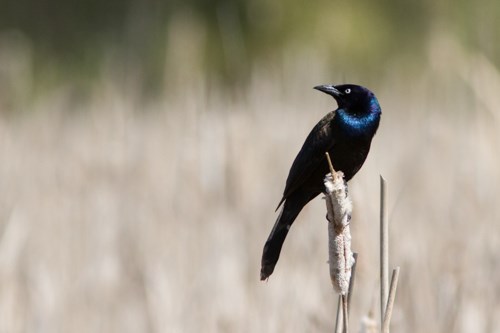
NPS/Gordon Dietzman IntroductionGrackles are one of only a few of our colonial nesting birds, but they nest in the tops of conifers and we’re usually unaware of their nests. Most feeding is done on the ground as the birds probe in the grass looking for insects and seeds. They are often found in feedlots and around windbreaks in rural areas and may threaten crops when large numbers flock together. Grackle range is expanding west and north as forests are logged or opened up, but the grackle population appears to be seriously declining. Post-breeding migration flocks begin to form in late July and August as the birds prepare to migrate south for the winter. Some of these flocks are enormous. In 1970, one flock in Anoka County, MN was estimated to contain 400,000 birds. In 1974, a migrating flock in Hennepin County, MN was estimated to contain a staggering 800,000 to 1 million grackles. Much larger flocks have been documented in other parts of the United States. Identification
| |
Last updated: October 1, 2021
